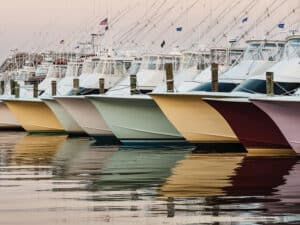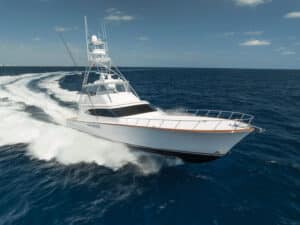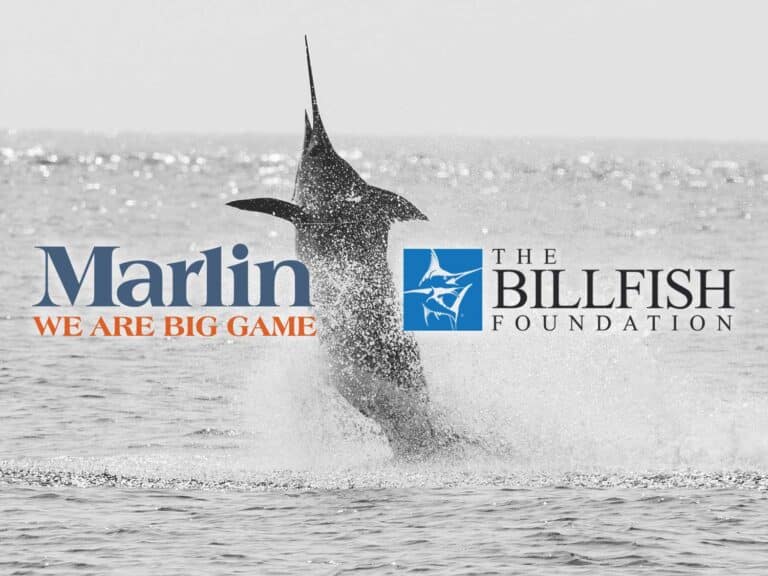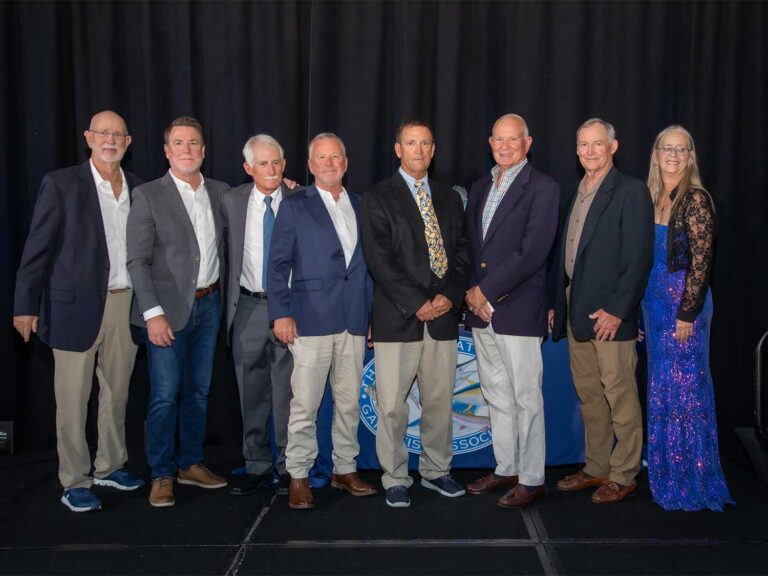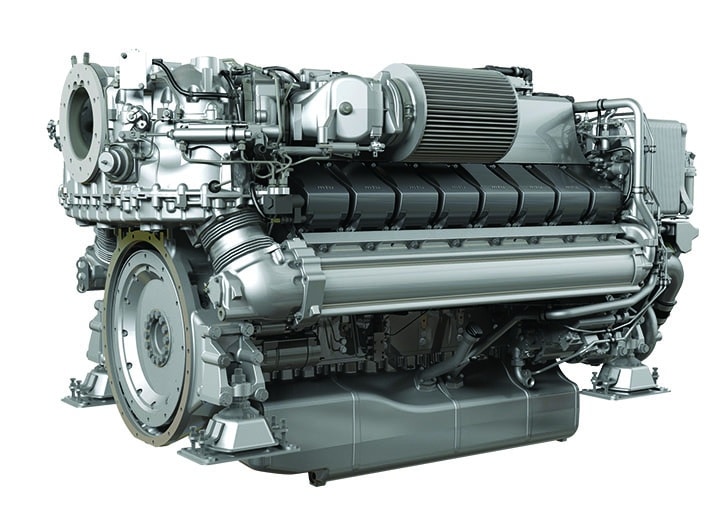
MTU Series
n 1973, the International Convention for the Prevention of Pollution from Ships created the protocol known as MARPOL, but it wasn’t until 2005 that MARPOL Annex VI created several air-pollution requirements for marine vessels. An international body, MARPOL relies on the International Maritime Organization to be the regulatory agency of the requirements, while newly manufactured engines are certified by the Environmental Protection Agency in the United States and Lloyd’s Register in the rest of the world. In the United States, these regulations are enforced by the Coast Guard, while other countries are responsible for their own enforcement in the waters in which they operate.
These regulations concern commercial and recreational vessels, and since 1994, the EPA has implemented emissions performance standards, starting with Tier 1 standards then implementing Tier 2 standards between 2004 and 2009. The regulations apply to newly built marine diesel engines with displacements fewer than 30 liters per cylinder installed on vessels flagged or registered in the United States.
The EPA defines a recreational vessel as “a vessel intended by the vessel manufacturer to be operated primarily for pleasure, or leased, rented or chartered to another for the latter’s pleasure, which includes charter-fishing vessels less than 100 gross tons that carry no more than six paying customers.” Vessels that have marine diesel engines are divided into three categories for the purposes of EPA’s standards: Category 1 is made of engines with more than 50 hp and up to five liters per cylinder displacement; Category 2 engines range from 5 to 30 liters per cylinder, and Category 3 engines come in at or above 30 liters per cylinder. Tier 3 standards come from the Clean Air Act, written by the EPA. The standards are a multistep plan with a number of “tiers,” or deadlines, for engine manufacturers to meet. Following suit, the European Union adopted a similar multistep plan not long after.
At a large cost to their bottom lines, diesel engine manufacturers implemented technology to reduce targeted harmful emissions and created products that adhere to the 2013-2014 Tier 3 standards, as well as new products for Tier 4. The new Tier 4 engines will include the application of high-efficiency catalytic after-treatment technology that will phase in beginning in 2014. The Tier 4 standards apply only to recreational marine diesel engines with more than 2,000 hp, so larger sport-fishing vessels will still be required to have these large and expensive catalytic converters on board.
Marine diesel engine emissions contain several types of pollutants that the standards seek to reduce in large percentages. The main culprits are nitrogen oxides, which contribute to urban haze and cause smog and acid rain. Diesel particulate matter, typically the visible belch of smoke from an engine, affects the respiratory system and can cause respiratory disease and lung damage. Then there is carbon monoxide, which reduces the delivery of oxygen to the body’s organs, and hydrocarbons, which, together with nitrogen oxide and carbon monoxide, are some of the major causes of ground-level ozone.
To be approved under the Tier 3 requirements, the levels of particulate emissions must be reduced by 40 percent and nitrogen oxide emissions must be reduced by 20 percent compared to the Tier 2 standards. Engine manufacturers have been busy developing Tier 3- compliant engines and are working on technology to improve not only emissions but also overall performance.
Working closely with boat- builders, engine manufacturers continue to develop lighter, cleaner, more fuel-efficient engines. This allows builders to steadily improve their boats with better engine-room layouts, improved bottom designs and stronger, lighter composite technology — ultimately resulting in more efficient boats.
MTU brought the Series 2000 yacht engines into compliance with the EPA Tier 3 recreational and IMO Tier 3 emissions standards. The new series 2000 M96 is capable of 2,600 hp by using in-engine technology that takes exhaust gas emissions and reburns them back through the engine with the company’s SCR exhaust gas after treatment. Advantages to doing this include reduced fuel consumption and enhanced acceleration characteristics.
Cummins also plans to have all products Tier 3-compliant by the end of 2013. Their newest engine, the QSB 6.7, has been compliant since Jan. 1. The QSB 6.7 is available in commercial and recreational ratings from 230 to 550 hp. The QSC 8.3 is available in Tier 3 with no mechanical changes on the engine itself, only simple calibrations. The QSC 8.3 is available in 500, 550 and 600 hp and is typically the engine used for their Zeus system.
The Cummins QSL 9 operates at lower revolutions per minute outputs and is Tier 3-compliant from 281 to 400 hp. Cummins’ Xtra-High Pressure Injection fuel system injects a precise quantity of fuel at an extra-high pressure with multiple injections per cycle, creating a smooth power delivery with lower fuel consumption. The popular QSM 11 will be available toward the end of the year as Tier 3-compliant with no mechanical changes. The QSM 11 is Tier 3-certified in 610, 670 and 715 hp.
Caterpillar brings several new Tier 3-compliant offerings to the market as well, including the new 650 hp C8.7. This engine uses an electronically controlled supercharger that provides torque and throttle response at low speeds, while optimizing fuel efficiency at high speeds. It features a common-rail fuel system for optimum combustion, closed crankcase ventilation and is compatible with CAT displays for repowers, as well as gplink for remote monitoring. The new C12.9 is a 1,000 hp Tier 3-compliant engine that features two-stage turbocharging for high-power density and improved fuel efficiency, a common-rail fuel system for better combustion and low emissions, as well as gplink for remote monitoring.
Volvo’s new D11 Series of Tier 3-compliant engines come in 625, 670 and 725 hp models. Improvements include more torque, an enhanced twin-entry turbo that allows each pulse to maximize charging pressure for better acceleration, a new turbo and a air filter design that reduce onboard noise levels and vibrations, plus an all-new engine block and cylinder head designed to improve cooling and extend engine life. The D11 series use the latest Volvo Electronic Vessel Control, enabling a number of features for increased security and control. The D11 engines are shaft and Volvo Penta IPS compatible.
MAN has been Tier 2 compliant with their engines and will offer a wide range of yacht engines that comply with the Tier 3 standard from 2014 on. They achieve the emission reductions without any increase in fuel consumption under full load, nor do they require external exhaust gas after-treatment systems. Offering engines from 730 to 1,800 hp — including the new generation of V8 and V12 engines along with their in-line six-cylinder engines — MAN has a full line of new products for vessels from 50 to 100 feet. Their eight cylinder engines include the 1,000 and 1,200 hp packages, and the V12s include the 1,400, 1,550, 1,650 and 1,800 hp engines.


